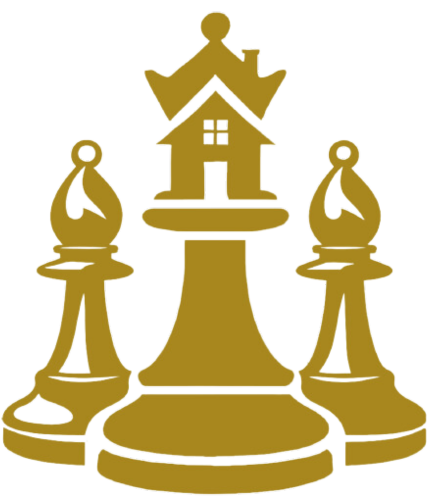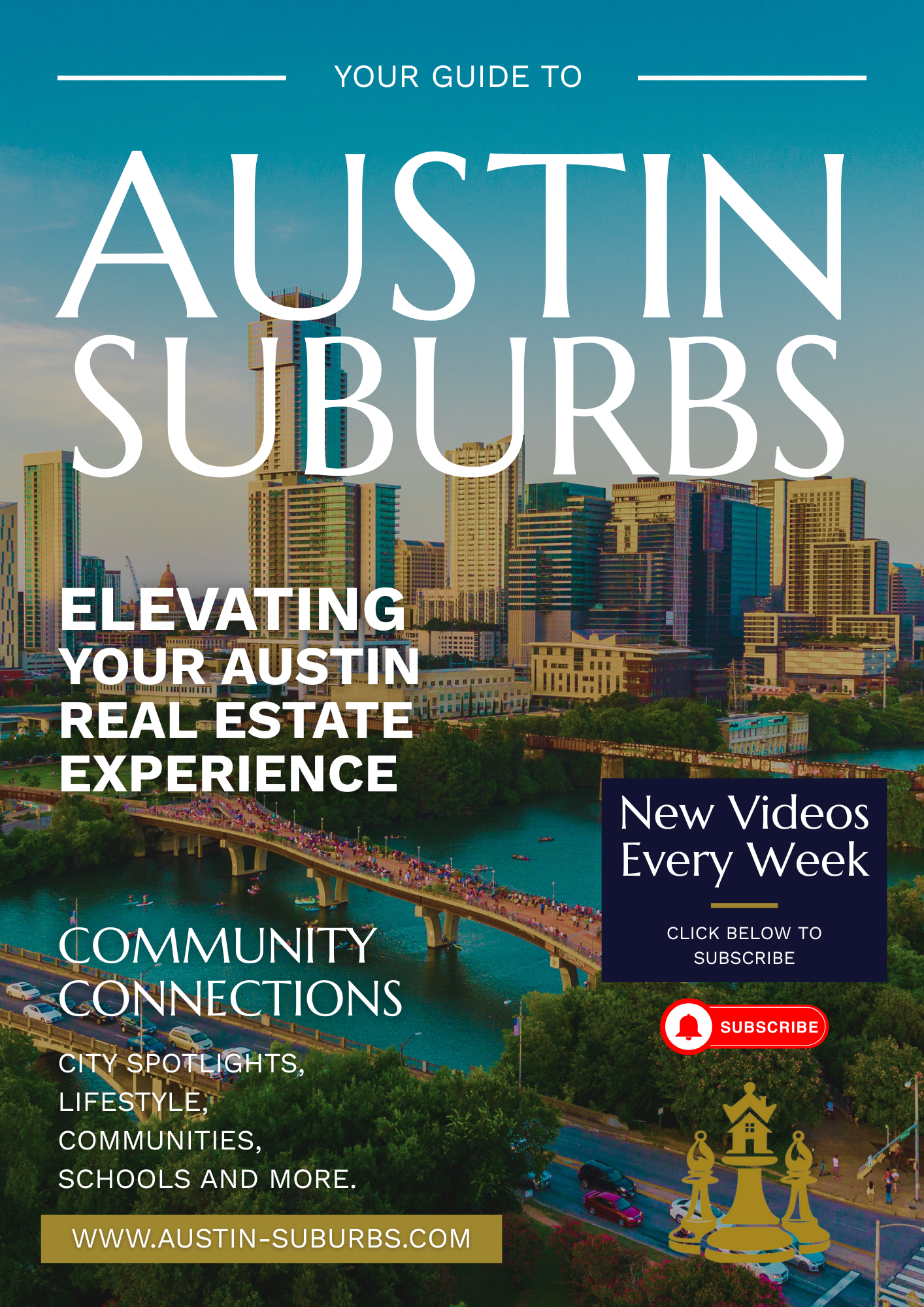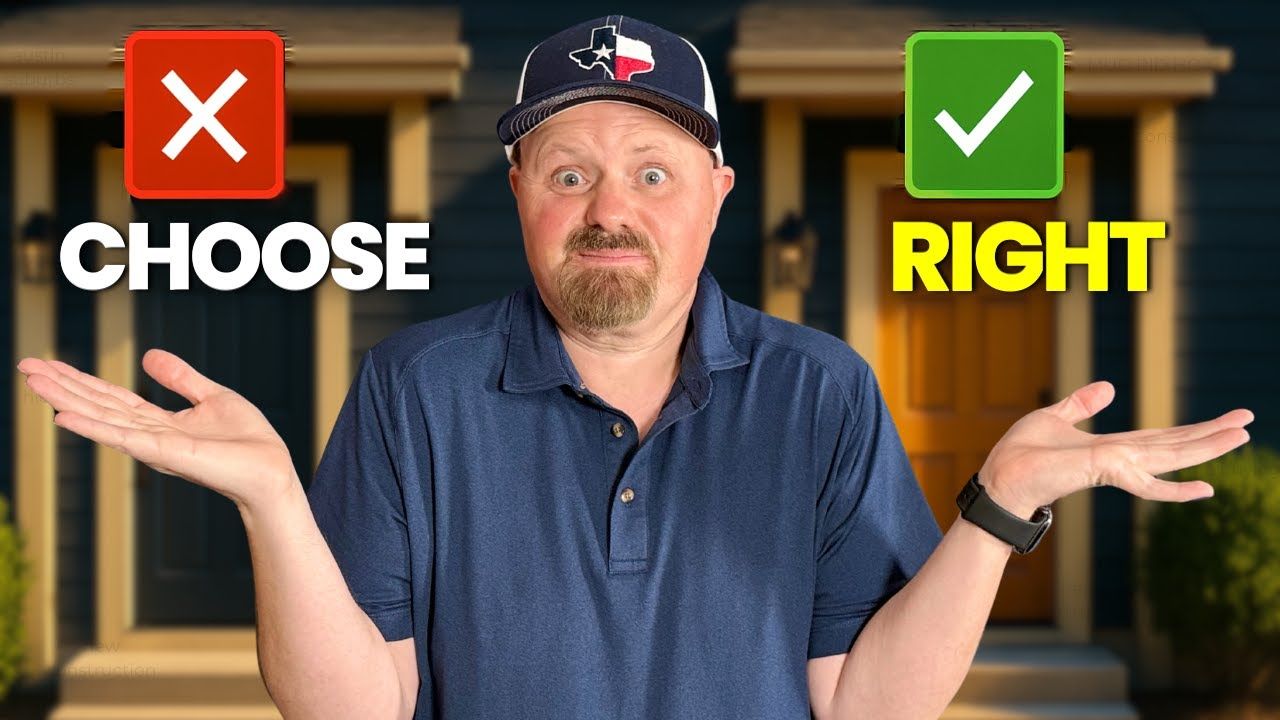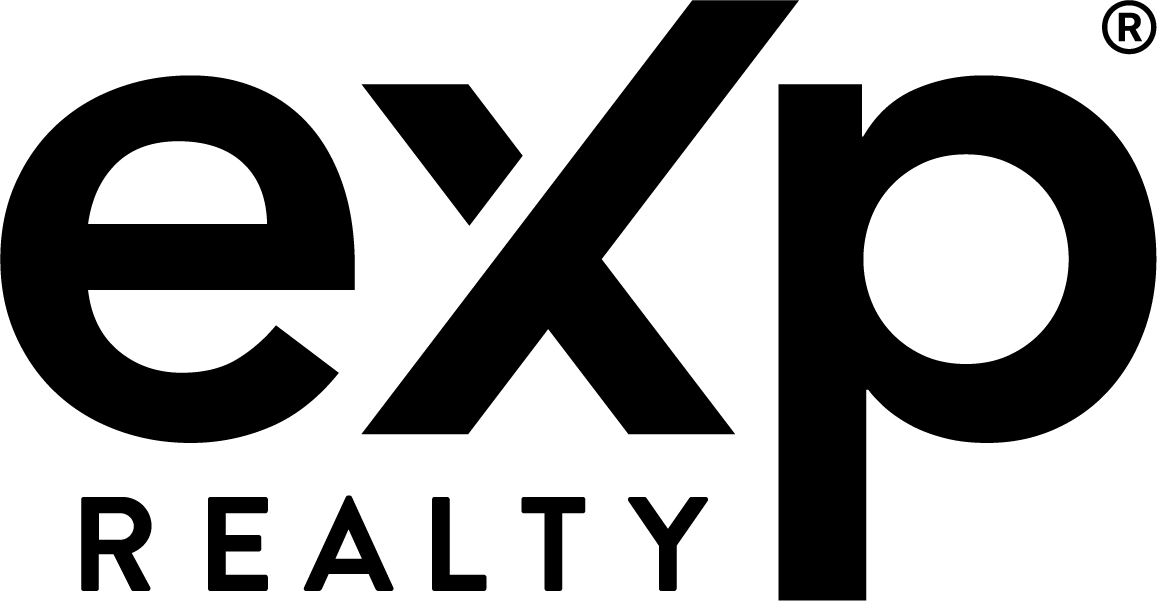BEST Areas to Live in Austin Suburbs: Austin Neighborhoods
This comprehensive guide — created and presented by Alisha & Matthew Wilson of Austin Suburbs — walks you through the BEST Areas to Live in Austin Suburbs + Suburbs Map Tour so you don’t waste months searching or end up in a place that doesn’t fit your lifestyle. If you’re relocating to Austin or just rethinking where you want to live inside this fast-changing metro, this article will give you the big-picture map, commute realities, and practical tips we wish every buyer knew before packing boxes.
Table of Contents
- Where Should You Be Living in Austin Suburbs?
- Navigating Austin’s Major Highways and Commute Times
- Where Austin Suburbs Connect: Major Highways Breakdown
- Explore the Best Austin Suburbs with Our Interactive Map
- Top Austin Neighborhoods and Suburbs Within 15, 30 and 45 Min Drive to Downtown
- Travis County: Central Austin and Key Suburbs
- Williamson County: North of Austin and Its Growing Communities
- Bastrop County: New Construction, Outdoor Space & Growing Infrastructure
- Caldwell County: Affordable Land and Future Growth Potential
- Commute Realities: Which Austin Suburb Fits Your Daily Routine
- Common Mistakes Homebuyers Make in Austin Suburbs
- FAQs About the BEST Areas to Live in Austin Suburbs
- Conclusion
Where Should You Be Living in Austin Suburbs?
Picking the right place matters. This blog focuses on the best Austin suburbs to live, how highways, job centers, commute time, and future growth shape home prices and daily life. We break the region into the logical rings most people think about: the inner 15-minute neighborhoods that hug downtown, the 30-minute suburbs that balance affordability and access, and the 45-minute-plus towns that deliver land and lower prices but ask for time behind the wheel.
When we help clients move — whether in 10 days or 10 months — the most common regret we see is underestimating commute time and connectivity. This guide will show you where major roads run, which suburbs plug into which arteries, and what each region delivers in lifestyle, price, and future resale potential.
Navigating Austin’s Major Highways and Commute Times
Austin’s geography and growth hinge on a handful of roads. Knowing them is the first step on our BEST Areas to Live in Austin Suburbs + Suburbs Map Tour. Here’s the short list you need to memorize:
- I‑35 — The backbone. Runs north‑south through downtown. No tolls, but chronically under construction.
- Mopac (Loop 1) — West of I‑35, heavy construction and toll/HOV lanes in spots.
- US‑183 — Northwest to southeast; part of it is tolled near the airport — a fast way to the airport when you can use it.
- State Highway 130 — The eastern bypass/toll road built for through traffic and freight. It’s an 85 mph corridor and the fastest route to Tesla and the airport on the east side.
- State Highway 45 — A circumferential route north of Austin that helps you avoid I‑35 in some cases.
- US‑290 — Runs from the northeast into the center of Austin. Tolling begins where 290 meets 130.
- State Highway 71 — East‑west corridor by the airport that connects to South Austin and beyond to Bastrop.
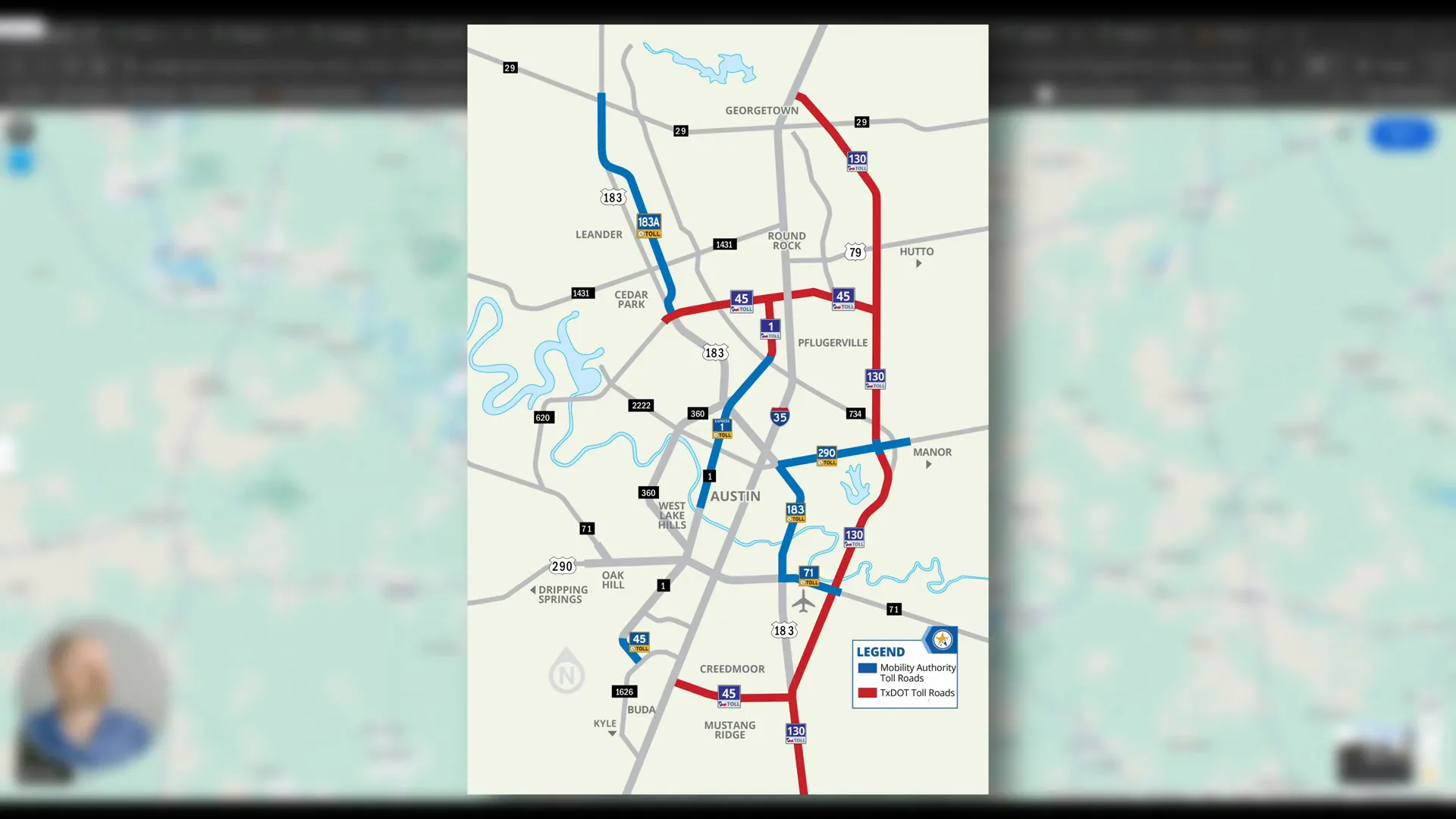
These roads shape commute times and where new development lands. On a light-traffic day, Austin‑Bergstrom International Airport is 15–20 minutes from downtown. During rush hour, that can easily double. We always tell clients: understand where your daily routine intersects with these roads before you write an offer.
Where Austin Suburbs Connect: Major Highways Breakdown
Now let’s map the suburbs to those roads — that’s the core of the BEST Areas to Live in Austin Suburbs + Suburbs Map Tour. Each highway pulls a different group of towns into its orbit:
- I‑35 corridor: Georgetown, Round Rock, Pflugerville to the north; central Austin downtown; south to Buda and Kyle. Highway 29 and 183 provide alternate access to Liberty Hill and other northwest communities.
- US‑183 corridor: Leander, Cedar Park, Domain area, and then southeast toward the airport and South Austin.
- SH‑130: Quick east‑side route to Georgetown, Hutto, Pflugerville, Manor and down to Lockhart.
- Loop 1 (Mopac): North Austin neighborhoods, Westlake, Rollingwood, Circle C areas; great for those targeting west and northwest Austin.
- US‑290: Runs northeast through Manor and out to Elgin — useful if you’re commuting from the east side into central Austin.
- SH‑71: The airport and South Congress access — also a route into Bastrop via SH‑95 and SH‑21.
Understanding these connections helps you reason about commute times to specific job centers. For example, if you work at Tesla or frequently fly, SH‑130 and 71 make East Side suburbs more attractive. If your job is downtown or at the Domain/Apple in northwest Austin, consider Round Rock, Cedar Park, Leander, or parts of North Austin depending on your tolerance for traffic.
Explore the Best Austin Suburbs with Our Interactive Map
We built an interactive map that visualizes the BEST Areas to Live in Austin Suburbs + Suburbs Map Tour so buyers can see travel times to downtown and the airport at a glance. The map overlays county boundaries and rings at 15, 30, and 45 minutes from downtown to make life planning easier.
Here’s how to read it:
- 15-minute ring: Neighborhoods like Zilker, Hyde Park, and Mueller — walkable, quick to downtown and the airport.
- 30-minute ring: Manor, Pflugerville, Round Rock, Buda — reasonable commutes, more affordable housing options.
- 45-minute ring and beyond: Georgetown, Hutto, Taylor, Kyle, Lockhart — lower price per square foot and lots of new construction but expect longer drives.
We recommend opening the interactive map early in your search to align neighborhoods with your daily priorities. Does school quality matter most? Are you prioritizing a quick airport run? Do you want acreage and privacy? The map helps highlight tradeoffs quickly.
Want to explore the best Austin suburbs in detail? Check out our interactive map to visualize commute times, homes for sale each city, top rated schools and more!
Top Austin Neighborhoods and Suburbs Within 15, 30 and 45 Min Drive to Downtown
Let’s walk the rings on the BEST Areas to Live in Austin Suburbs + Suburbs Map Tour and give a realistic snapshot of what you’ll get in each time band.
15 Minutes — The Inner Ring: Walkability & Rapid Access
Neighborhoods in this ring are priced for proximity. You get urban amenities, nightlife, shorter commutes, and smaller yards. Expect higher per-square-foot prices; condos and smaller homes are common.
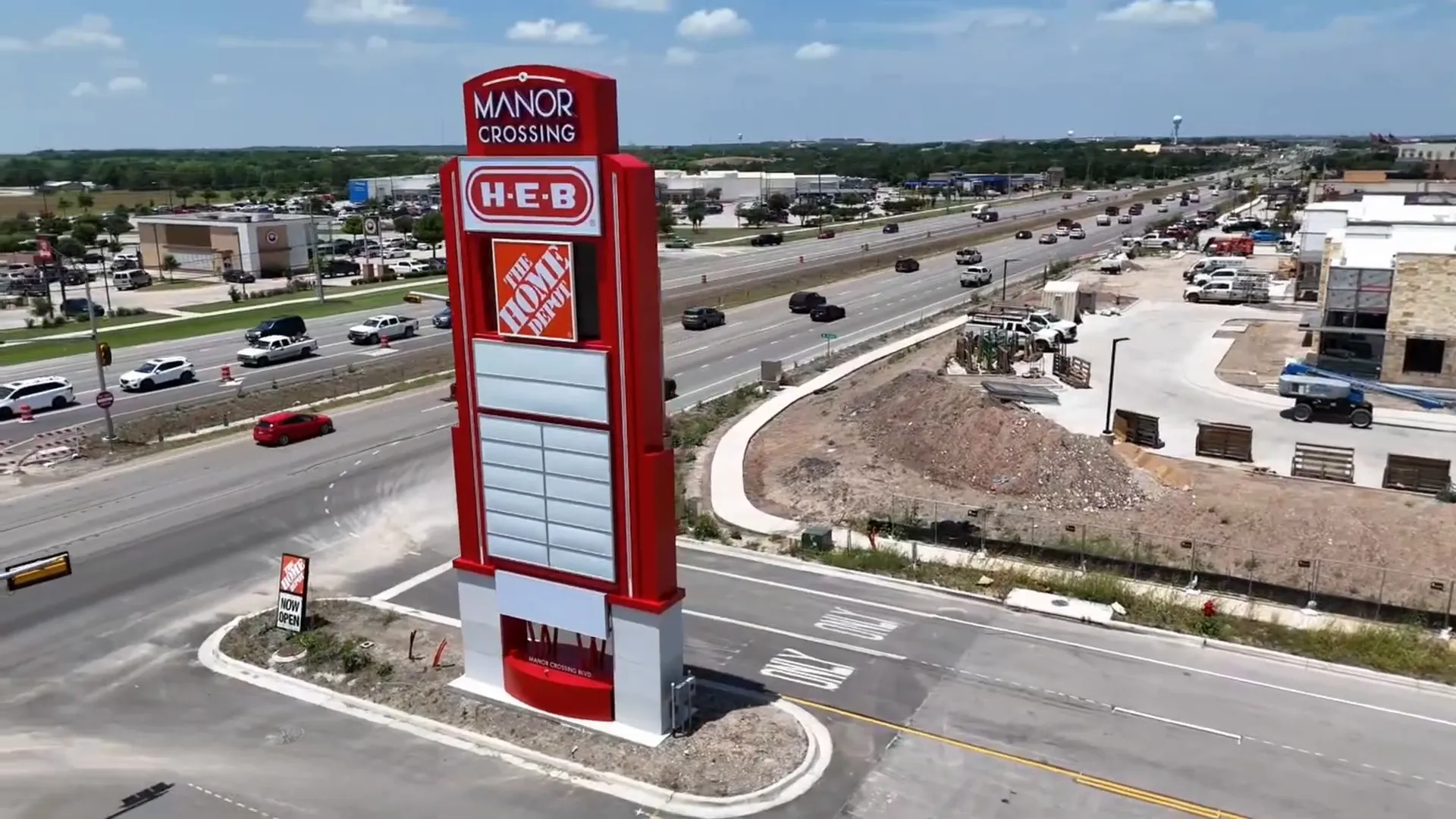
Examples: Zilker, Hyde Park, Mueller. These areas are ideal if you want walkability, short commutes, and to be in the cultural center of the city.
30 Minutes — The Balanced Suburbs
This is the sweet spot for many buyers: Round Rock, Pflugerville, Manor, and portions of Buda and Kyle. You get more home, better yards, and still keep daily drives manageable most days.
Schools, shopping, and master-planned communities make the 30-minute ring popular for families. New construction is abundant in these suburbs and offers predictable product and HOA-based amenities.
45 Minutes+ — Land, Affordability, & Growth Potential
Georgetown, Hutto, Taylor, Lockhart, and Kyle fall here. These areas are growing quickly — often thanks to large employer investments — but they require commitment to longer commutes or remote work.
These towns deliver bigger lots, lower prices (relative to Austin proper), and strong appreciation potential if you’re in it for the long term.
VIEW HOMES FOR SALE IN AUSTIN TEXAS
Travis County: Central Austin and Key Suburbs
Travis County includes Austin proper and many close-in neighborhoods. It’s the seat of walkability, nightlife, restaurants, and — yes — notable traffic. As of June 2025, the median price for the city hovered around $590,000 while countywide was about $525,000.
Manor (east of Austin) is one of our favorite examples of an affordable, close-in suburb. Median prices in Manor sit in the mid-$300,000s, and new construction is booming — partly because of Tesla’s regional activity. Manor is unique because it’s often a 15–20 minute drive to downtown and the airport when traffic cooperates.
Then there’s Taylor, further out at roughly an hour to downtown, but Samsung’s investment has created a jobs lift and strong long-term upside for homebuyers there. New construction and infrastructure investment often precede long-term appreciation.
Williamson County: North of Austin and Its Growing Communities
Williamson County covers Round Rock, Georgetown, Cedar Park, and Leander — the primary north-of-Austin growth corridor. Median prices here sit around $425,000 as of mid-2025.
Round Rock is a tech hub (Dell, Amazon presence) and is highly sought for great schools and master-planned communities. A typical home purchase price in Round Rock is around $450,000. Georgetown brings historic charm and a slower pace — homes from the mid $400,000s and a lovable downtown scene.
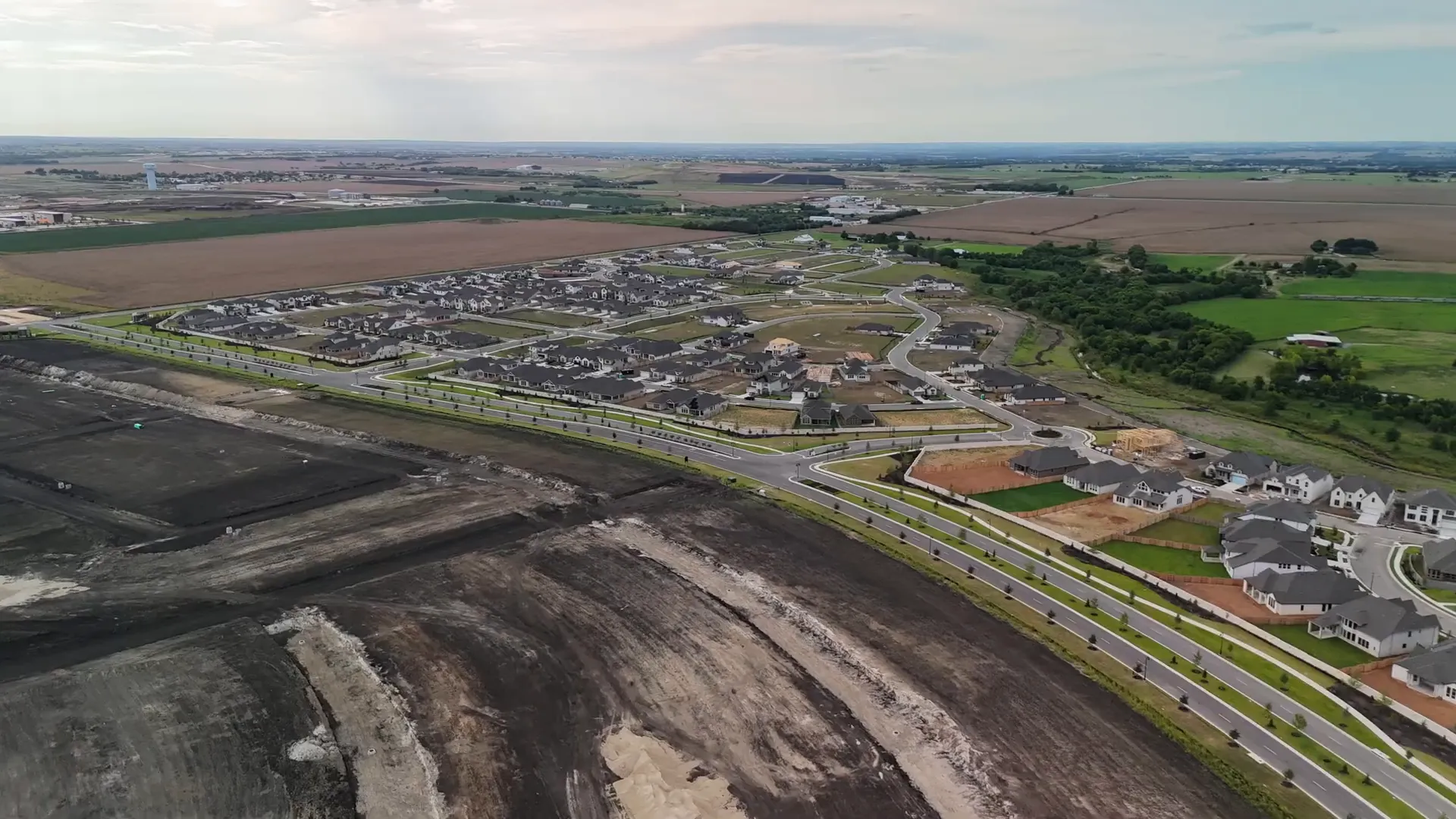
Cedar Park and Leander lean newer with plenty of family neighborhoods, but commuting from some pockets can be longer depending on where you work in Austin.
Bastrop County: New Construction, Outdoor Space & Growing Infrastructure
Bastrop County to the east has become a hotspot for buyers seeking space and affordability. Median home prices are around $375,000, and the area is benefiting from growth tied to Tesla and SpaceX activity. Bastrop offers access to outdoor recreation along the Colorado River and a charming downtown scene with local favorites like The Painted Porch bookstore and riverside dining.
Smaller towns like Elgin and Smithville deliver small-town charm and long-term growth potential — but they are less practical for daily commuting to central Austin.
Caldwell County: Affordable Land and Future Growth Potential
Further south and southeast, Caldwell County includes Lockhart — famous for barbecue and an affordable housing base. Median prices here start near $290,000, making Lockhart one of the most affordable markets in the Greater Austin area. It’s a long commute to downtown (45 minutes+), but if you want land, privacy, and a slower pace of life, Lockhart is compelling.
We’ve even made investment bets in Lockhart because the long-game fundamentals — affordability, regional growth, and unique local culture (hello, Black’s Barbecue!) — make it a promising place for future appreciation!
Commute Realities: Which Austin Suburb Fits Your Daily Routine
Commuting is the most lifestyle-defining factor in Austin. On our BEST Areas to Live in Austin Suburbs + Suburbs Map Tour, we show realistic commute times you should expect:
- Round Rock to downtown: 30–45 minutes (depending on where you are in Round Rock and traffic).
- Manor to Tesla: 15–20 minutes (SH‑130 is a major enabler).
- Georgetown to the Domain: 35–45 minutes.
- Kyle and Buda to downtown: 30–45 minutes.
Toll roads (SH‑130, portions of US‑183, and HOV/toll lanes on Mopac) can save you time but they come with cost. If tolls matter, get a toll tag and build the monthly cost into your budget. For us — we drive everywhere and would gladly pay tolls to save time — but not every buyer has that tolerance or budget.
Where you should live depends on priorities:
- Suburban life, top schools, parks, shopping: target Williamson and Hays counties.
- Privacy and acreage: West Austin suburbs (Lakeway, Spicewood, Westlake) offer Hill Country views and lake access but higher prices and longer drives.
- Affordability and growth: East Austin suburbs like Manor, Taylor, and Bastrop are delivering new construction and upward trajectory.
- Walkability and nightlife: Central Austin — Mueller, Zilker, and downtown neighborhoods.
Common Mistakes Homebuyers Make in Austin Suburbs
From our work with buyers, here are the top mistakes we see — and how to avoid them on your own BEST Areas to Live in Austin Suburbs + Suburbs Map Tour.
- Underestimating traffic: Don’t assume a 30-minute commute on a map means 30 minutes every day. Rush hour can add time and stress that turns a great house into a bad daily experience.
- Overestimating what your money buys near downtown: Near-downtown properties command premium prices. A luxury‑priced condo might still be a small one-bedroom with limited storage. Be realistic about square footage expectations.
- Ignoring toll roads: Toll costs add up fast. If you plan to use tolls regularly, add that cost to your monthly commuting budget and get a toll tag.
- Having no non-negotiables: Most buyers compromise. Set at least three non-negotiables (school district, commute cap, lot size, etc.) to guide decisions.
Planning ahead, being honest about tradeoffs, and using tools like an interactive map will save you time, money, and frustration.
FAQs About the BEST Areas to Live in Austin Suburbs
Which suburbs offer the best mix of affordability and convenience?
Manor, Pflugerville, Round Rock, and Buda typically give you more house for the money while keeping commutes manageable for many jobs. These towns appear prominently on our BEST Areas to Live in Austin Suburbs + Suburbs Map Tour because they balance price, schools, and access.
Where should I live if I work at Tesla or fly frequently?
Look east — Manor, Pflugerville, and locations along SH‑130 and SH‑71 reduce drive times to Tesla and the airport. SH‑130 is a fast toll option — treat it like an insurance policy for time.
Is West Austin worth the commute?
West Austin (Westlake, Bee Cave, Lakeway, Spicewood) provides privacy, lake access, and luxury amenities. If scenic views and acreage are priorities and you can tolerate a 45–60+ minute drive into downtown during peak hours, these are dreamy places to live.
Are toll roads necessary?
Not strictly necessary, but tolls save time. If commute time is the top priority, expect to use toll lanes and budget for them. It’s wise to get a toll tag early in your move process.
How should I use the 15/30/45-minute rings?
Use the rings to narrow neighborhoods that fit your commute tolerance. If your job is downtown and you need a short commute, stick inside the 15–30 minute rings. If you work remote or have flexible hours, expanding into the 30–45+ minute ring opens affordability and land options.
Conclusion
Ultimately, the best Austin suburbs to live is about tradeoffs. Austin’s highways and job centers create patterns of price and commute that you can use to your advantage. Decide what you won’t compromise on, map your routine, and measure drive times at real commute hours.
We love helping buyers translate desires into neighborhoods — whether you need walkability, acreage, top-rated schools, or the fastest airport access. Use the interactive map, set three non-negotiables, and don’t underestimate the cumulative cost of tolls and commute time.
If you're prepared to purchase a home in Austin, don't hesitate to get in touch! You can call or text me at 512-648-2828 or visit our website at www.austin-suburbs.com . If you seek personalized assistance, schedule a Zoom call with us . We’ll navigate the map alongside you, create a shortlist based on your must-haves, and support you in making a well-informed decision. By following our method, you’ll discover the ideal location more quickly — because we genuinely care about you, and we want your transition to Austin to be successful.
Alisha & Matthew Wilson
With years of experience in both residential and investment properties, they are dedicated to helping clients navigate Austin’s thriving market.
LIVING IN Austin TX
Specializing in relocation and real estate investment, they provide expert advice and guidance to help you find your dream home or investment property in the vibrant Austin market. Tune in for helpful tips, neighborhood tours, and insights on living in Austin.
